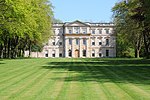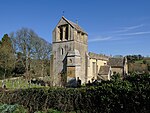Barnsley Warren

Barnsley Warren (grid reference SP055064) is a 61.3-hectare (151-acre) biological Site of Special Scientific Interest in Gloucestershire, notified in 1954 and renotified in 1984. The site is also included in A Nature Conservation Review. It lies in a steep-sided dry valley, east of the A429, northeast of Cirencester in the Cotswolds. The site is listed in the 'Cotswold District' Local Plan 2001-2011 (on line) as a Key Wildlife Site (KWS).Following the introduction of the Countryside and Rights of Way Act, the whole of the site was designated "access land" and is therefore open to public access. There are seven units of assessment and the Gloucestershire Pasqueflower Reserve is unit 4.
Excerpt from the Wikipedia article Barnsley Warren (License: CC BY-SA 3.0, Authors, Images).Barnsley Warren
Stow Road, Cotswold District Ampney Crucis
Geographical coordinates (GPS) Address Nearby Places Show on map
Geographical coordinates (GPS)
| Latitude | Longitude |
|---|---|
| N 51.7562 ° | E -1.9217 ° |
Address
Winterwell Pump
Stow Road
GL7 5EU Cotswold District, Ampney Crucis
England, United Kingdom
Open on Google Maps









